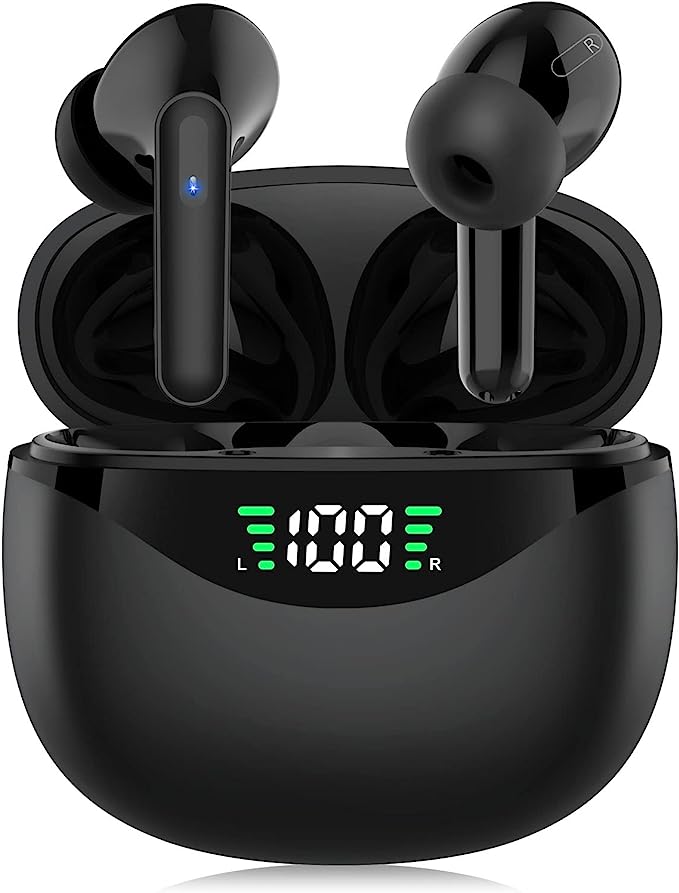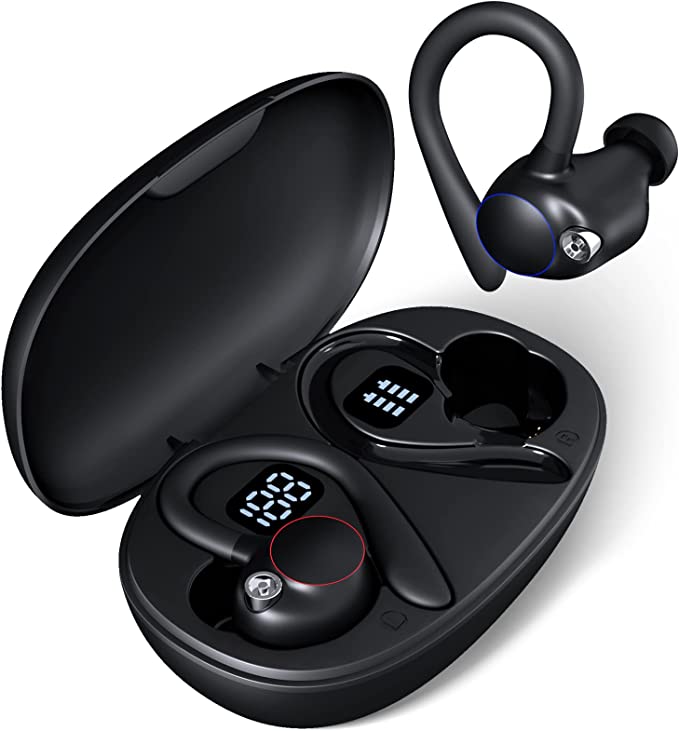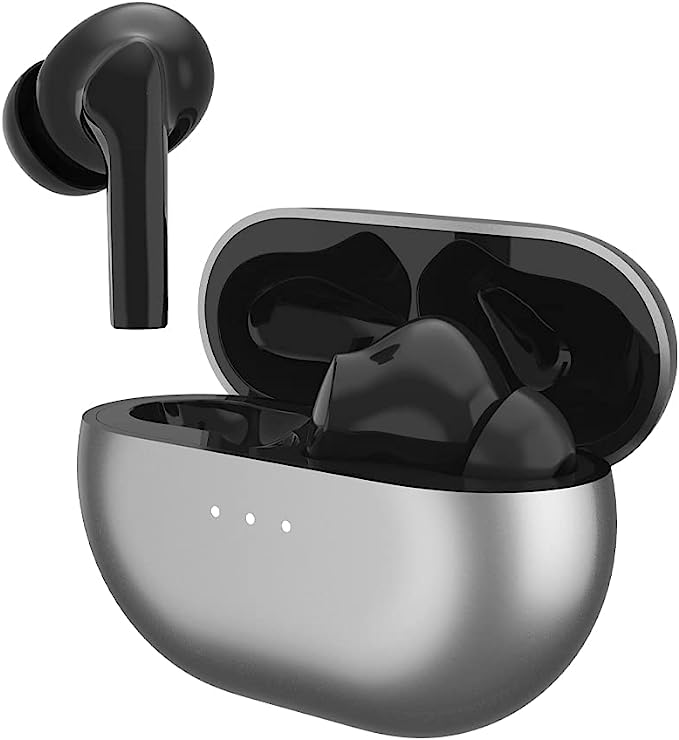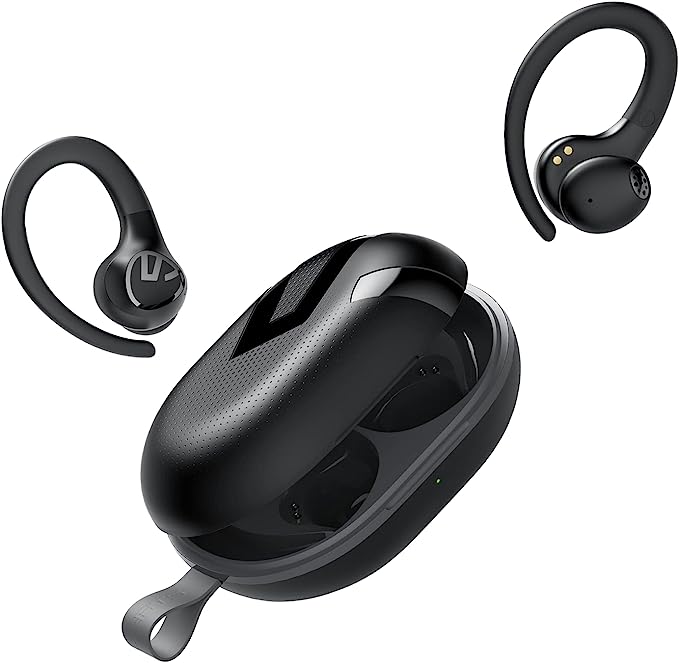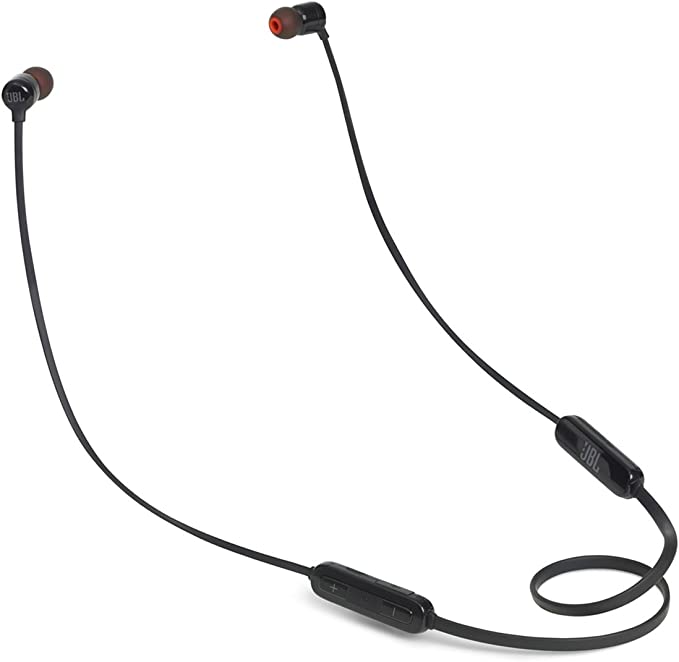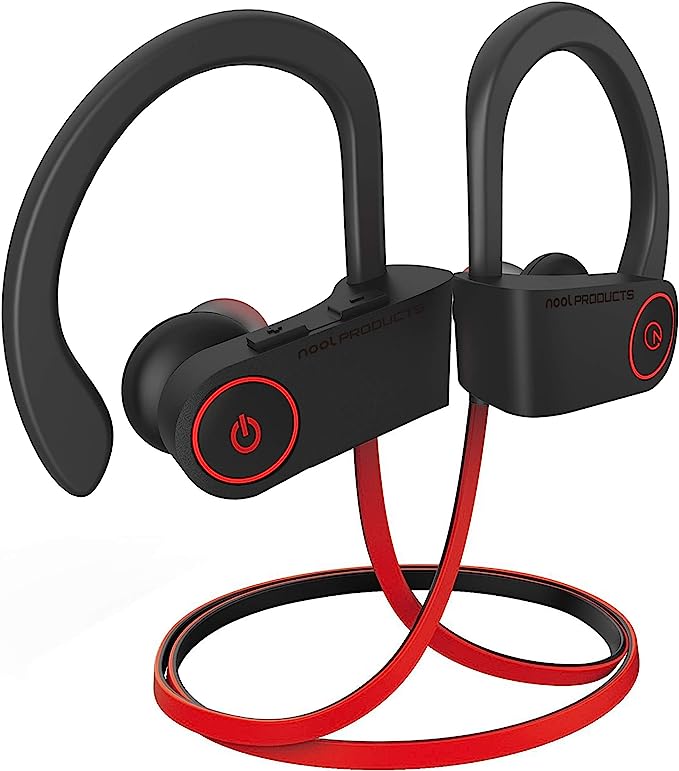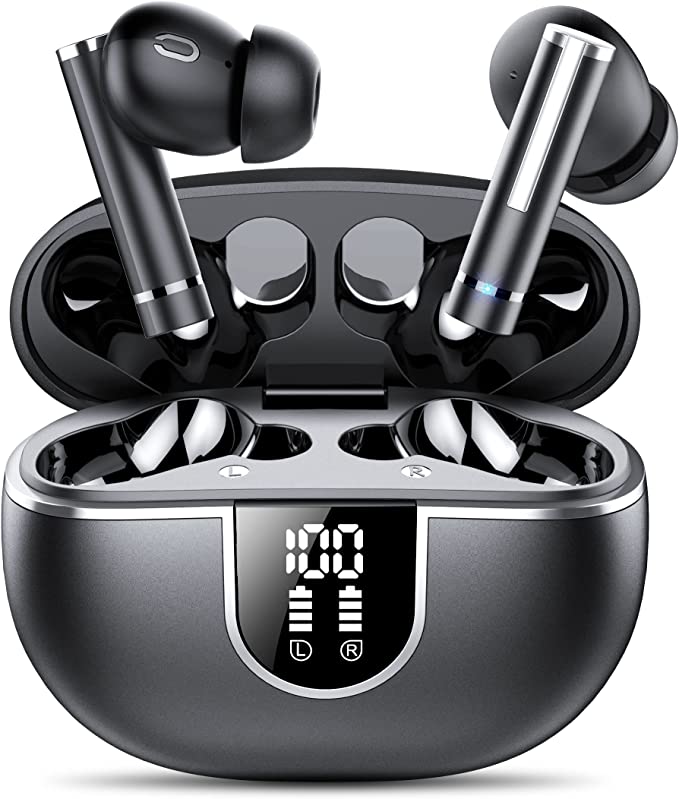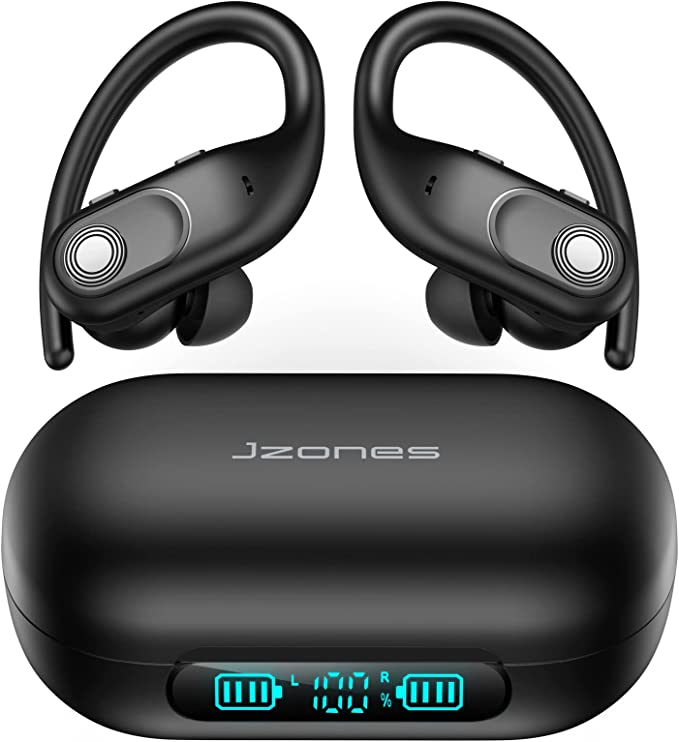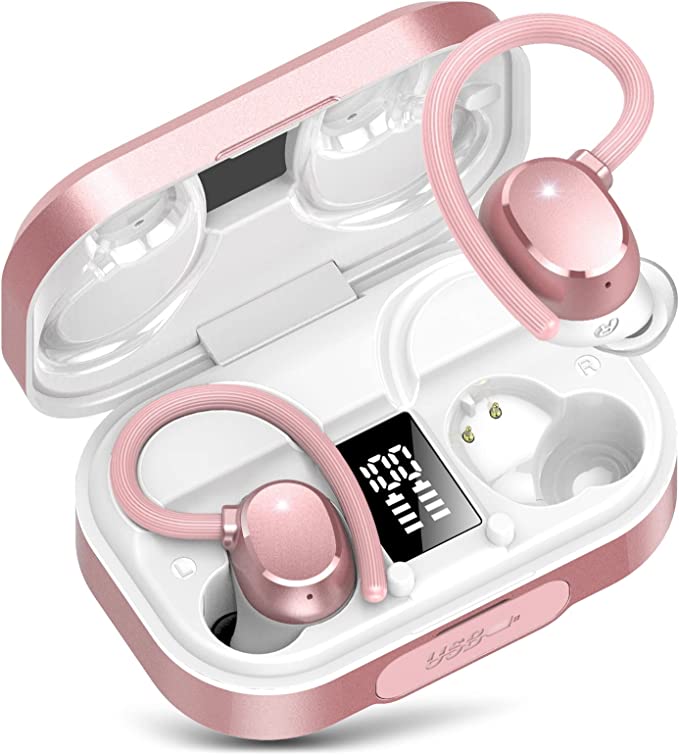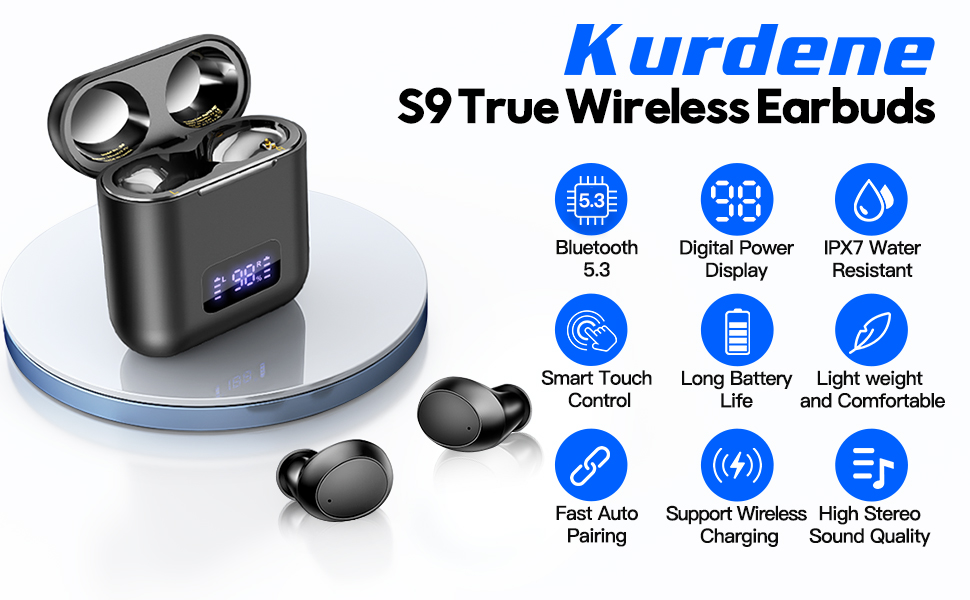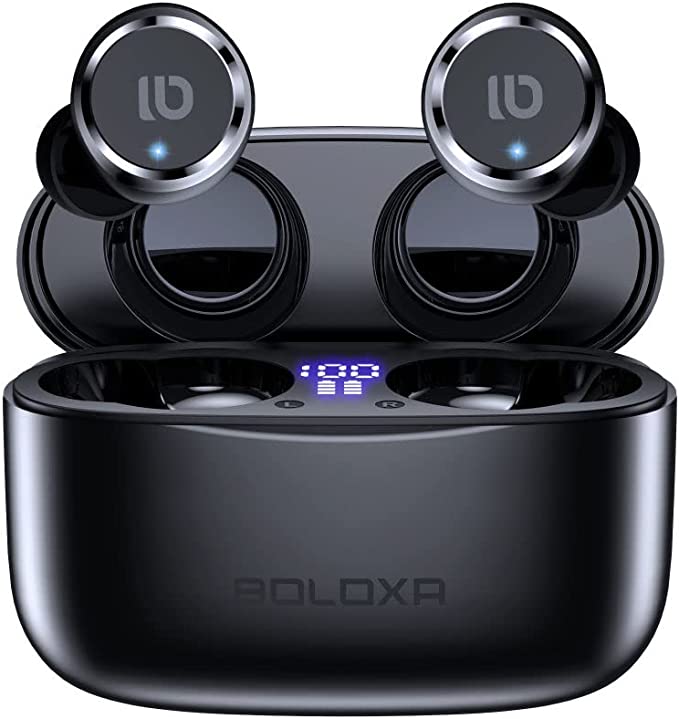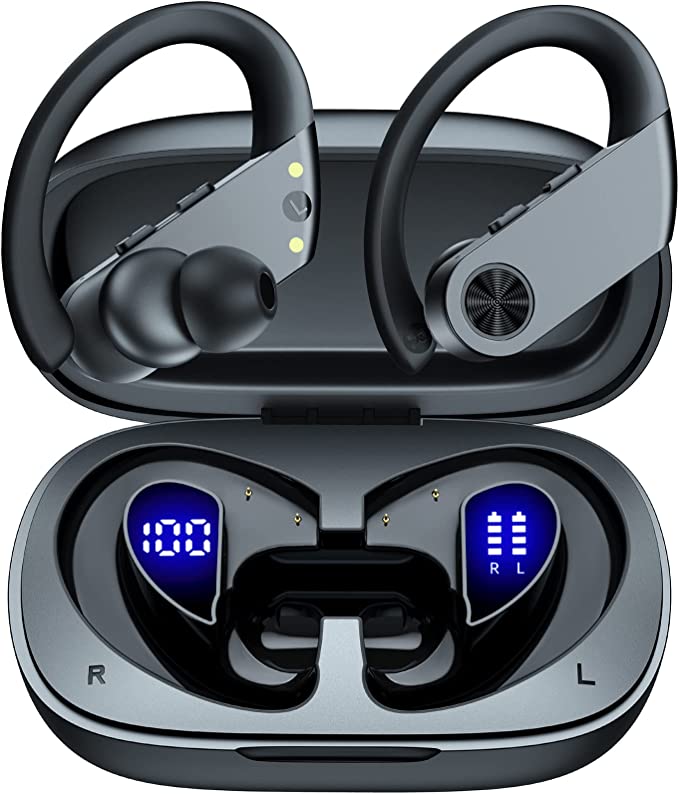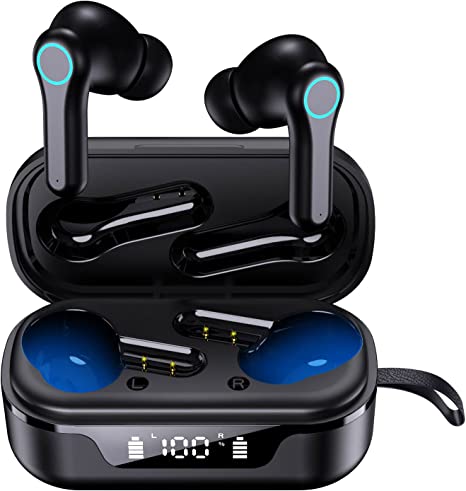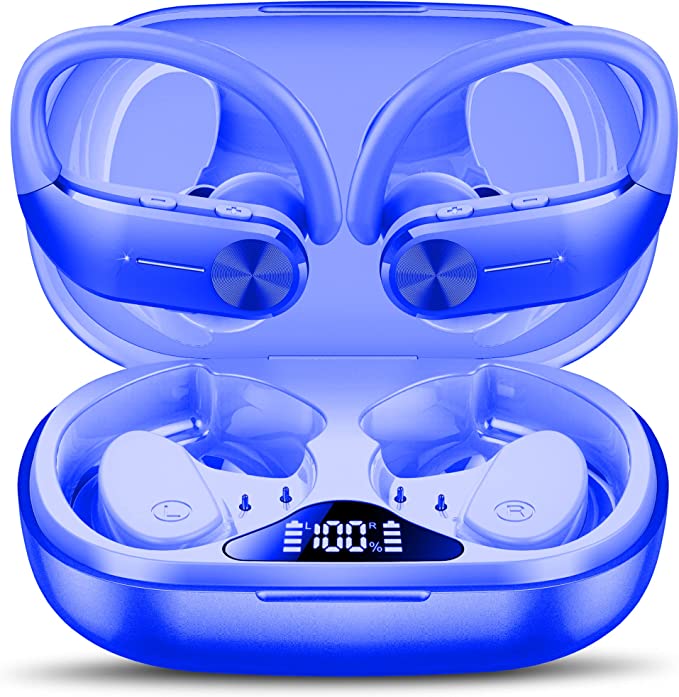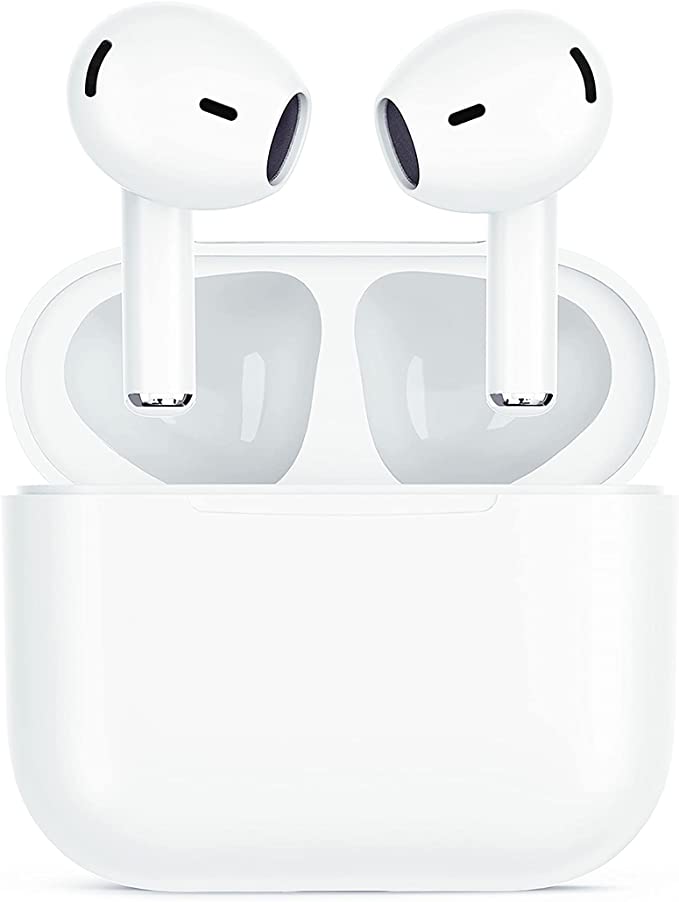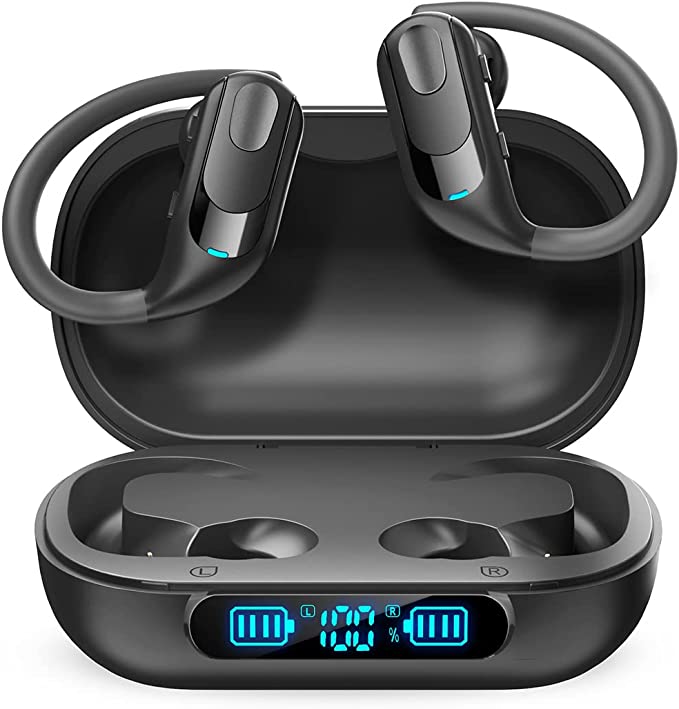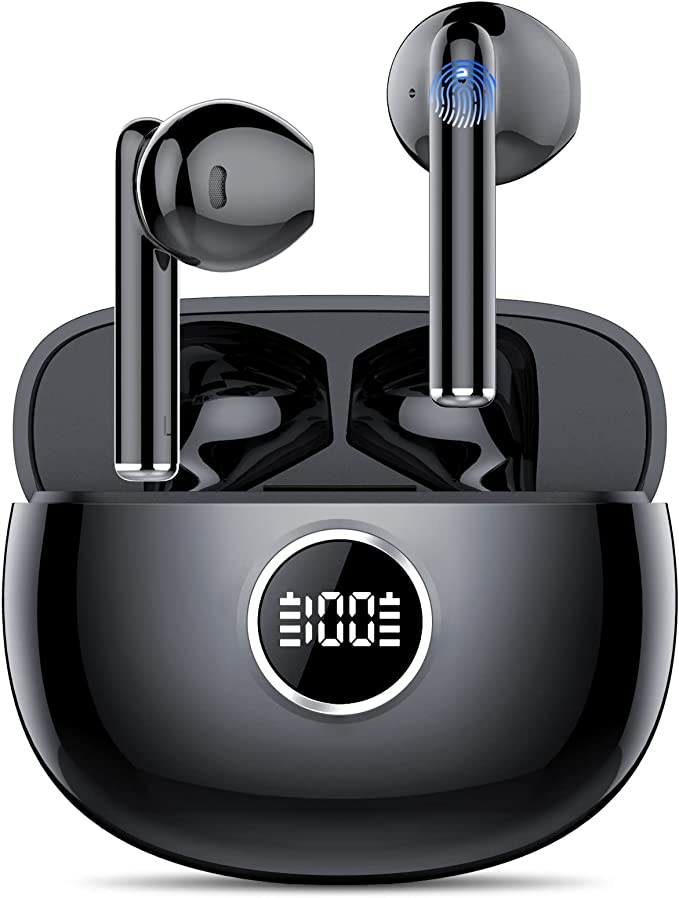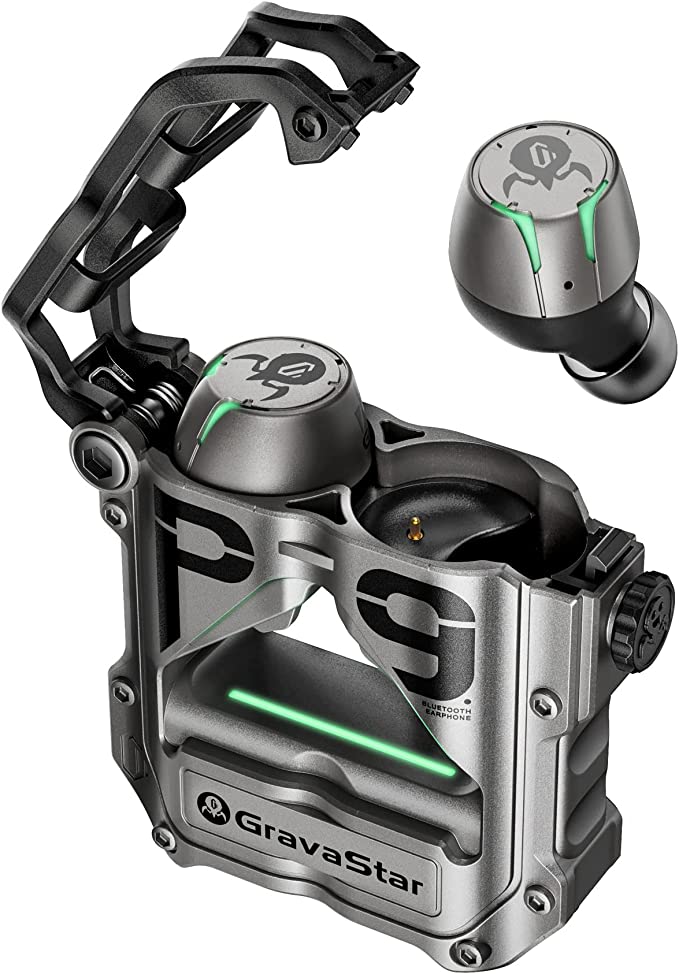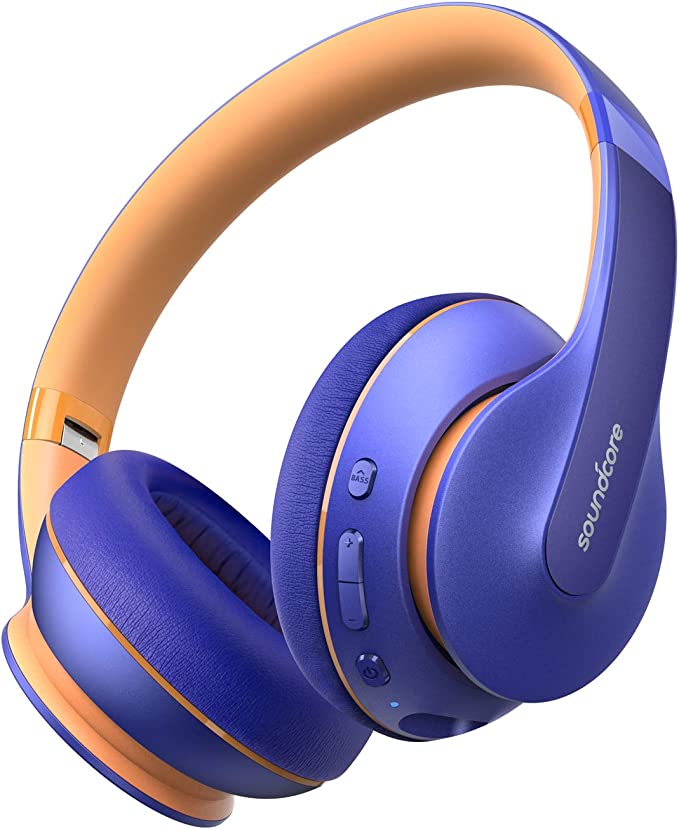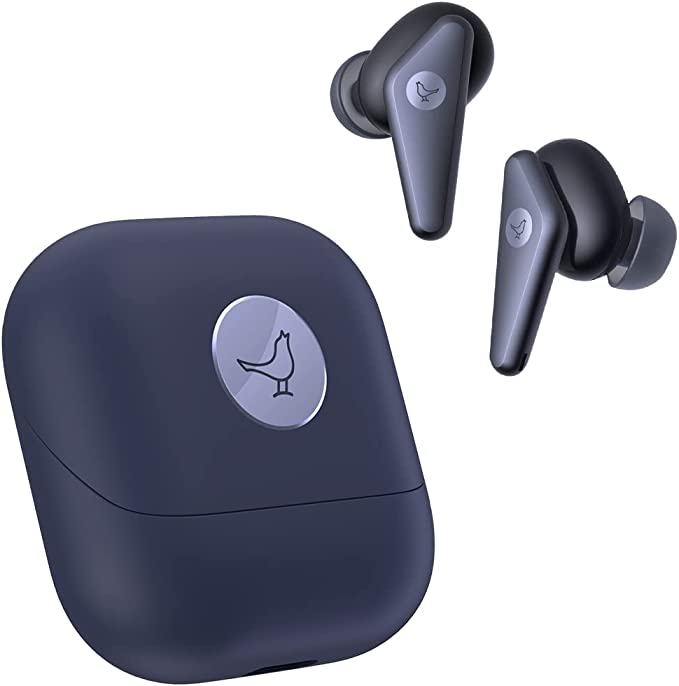sajawass BX35 Wireless Earbuds: Unpacking Bluetooth 5.3, 50-Hour Playtime, and IPX7 Water-Resistance
Update on May 21, 2025, 11:29 a.m.
In our hyper-connected world, the quest for the perfect personal audio experience often feels like navigating a labyrinth of technical specifications. We crave the freedom of wireless sound, the bliss of immersive music, and the clarity of uninterrupted conversations. But what truly powers these tiny marvels that have become such an integral part of our daily soundscape? Let’s take a closer look at a device like the sajawass BX35 Wireless Earbuds, Bluetooth Headphones 5.3 not as a product review, but as a fascinating lens through which we can explore the remarkable science and engineering packed into modern wireless audio. Understanding this technology doesn’t just demystify the jargon; it empowers us to appreciate the innovation and make choices that genuinely enhance our auditory lives.

The Invisible Tether: Demystifying Bluetooth 5.3 and Seamless Pairing
The very notion of “wireless earbuds” hinges on a technology many of us use daily, perhaps without a second thought: Bluetooth. Its rather poetic name, believe it or not, harks back to Harald “Bluetooth” Gormsson, a 10th-century Danish king famed for uniting disparate Danish tribes. Just as King Harald united Denmark and Norway, the creators of Bluetooth technology at Ericsson in the 1990s envisioned a universal standard to unite various devices wirelessly. Fast forward to today, and Bluetooth is the invisible tether connecting our phones, laptops, smartwatches, and, of course, our earbuds.
The sajawass BX35 earbuds, for instance, specify Bluetooth 5.3. But what does this version number truly signify for your listening experience? Think of Bluetooth as a sophisticated digital handshake. When you pair your earbuds, they establish a Personal Area Network (PAN) with your source device, typically operating in the 2.4 GHz Industrial, Scientific, and Medical (ISM) radio band. To avoid interference with other devices using this crowded band (like Wi-Fi routers or microwave ovens), Bluetooth employs a clever technique called Frequency-Hopping Spread Spectrum (FHSS). It rapidly switches frequencies (hopping dozens or even hundreds of times per second across 79 designated channels for classic Bluetooth) in a pseudo-random sequence known only to the paired devices. This makes the connection robust and resistant to interference.
Each iteration of Bluetooth brings refinements. Bluetooth 5.3, an evolution from its predecessors, offers several key enhancements:
- Improved Connection Stability and Lower Latency: Version 5.3 includes features that allow devices to classify channels as “good” or “bad” more effectively. If a channel used for data transmission starts to experience interference, the connection can more quickly hop to a better channel, reducing the likelihood of those annoying audio dropouts or stutters, especially in congested radio environments like busy offices or public transport. This contributes significantly to the “fast and stable connection” touted by the BX35.
- Enhanced Energy Efficiency: Bluetooth Low Energy (BLE), a crucial part of the standard, has seen significant improvements. Bluetooth 5.3 allows for more efficient scheduling of data transmissions, enabling devices to spend more time in ultra-low power sleep states. For earbuds, this translates directly to longer playback time on a single charge from their small internal batteries.
- Connection Subrating: This feature allows for a rapid switch between low-duty and high-duty cycles. Imagine your earbuds are mostly idle, just maintaining a connection (low duty). If a call comes in or you start playing music, they can switch to a high-duty cycle almost instantaneously for better responsiveness, then drop back down to save power.
For the BX35 user, these under-the-hood improvements manifest as tangible benefits. The “One Step & Auto Pairing” feature, for example, is a testament to the streamlined connection protocols. Once that initial handshake is made, the earbuds remember your device. Pulling them from their charging case should ideally trigger an almost instantaneous re-connection, allowing you to dive into your music or answer a call without frustrating delays. Imagine stepping off a crowded train; your music, which might have stuttered with older Bluetooth versions due to signal congestion, remains clear and consistent. That’s the science of Bluetooth 5.3 working silently for you.

Crafting Your Personal Soundscape: Drivers, Rendering, and Crystal-Clear Conversations
The soul of any audio device lies in its ability to translate electrical signals into the rich tapestry of sound we perceive. For the sajawass BX35, this critical task falls to its 13mm vibrating diaphragms.
Let’s unpack that. A speaker driver, in its simplest form, is an electromechanical transducer. When you play music, an electrical audio signal, fluctuating rapidly, is sent to the earbuds. Inside the driver, this signal flows through a voice coil attached to the diaphragm (the “13mm” part). This coil is suspended within a magnetic field created by a permanent magnet. As the current in the voice coil changes direction and intensity (mirroring the audio waveform), it generates a fluctuating magnetic force, causing the coil and the attached diaphragm to vibrate rapidly back and forth. These vibrations displace air, creating sound waves that travel through the ear canal to your eardrum, which your brain then interprets as music, speech, or any other sound.
The “13mm” refers to the diameter of the diaphragm. Think of it like the head of a drum; a larger drumhead can generally move more air and is often better at reproducing lower frequencies (bass). While size isn’t the only factor (diaphragm material, excursion capability, and enclosure design are also crucial), a 13mm driver in an earbud is relatively generous. It offers the potential for a fuller sound with more impactful bass and a wider soundstage compared to smaller drivers, contributing to what the product describes as “incredible sound quality and crystal clear highs.” The diaphragm material itself, though not specified for the BX35, is often a carefully chosen polymer, paper composite, or even more exotic materials like beryllium or graphene in high-end devices, each selected for its blend of lightness, stiffness, and damping properties to accurately reproduce sound.
The mention of “HD rendering technology” likely points to the onboard Digital Signal Processing (DSP). Raw audio signals aren’t always perfect, and the tiny acoustic environment of an earbud presents challenges. DSP chips employ complex algorithms to fine-tune the audio output. This can involve:
- Equalization (EQ): Adjusting the balance of different frequencies (bass, midrange, treble) to achieve a desired sound signature or to compensate for the driver’s natural response.
- Dynamic Range Compression: Managing the difference between the loudest and softest parts of a track to prevent clipping or make quieter details more audible.
- Spatial Audio Processing (less common in this price tier, but part of “rendering”): Creating a more immersive, three-dimensional sound experience.
Essentially, this “rendering” aims to polish the audio, ensuring those “crystal clear highs” are delivered without harshness and that the overall sound is detailed and engaging. The effectiveness of such rendering also depends on the Bluetooth audio codecs used (e.g., SBC is basic, while AAC or aptX, if supported, can offer higher fidelity data transmission).
Clear communication is another pillar of a good earbud experience. The BX35 features a “CVC8.0 noise-cancelling microphone.” It’s vital to distinguish this from Active Noise Cancellation (ANC) for the listener. CVC, which stands for Clear Voice Capture, is a suite of algorithms developed by Qualcomm that focuses on enhancing the quality of the voice being transmitted from your microphone. It works by using the microphone (or sometimes multiple microphones in an array) to pick up your voice along with any ambient sounds. The CVC algorithm then intelligently differentiates your speech patterns from the background noise – be it office chatter, wind noise, or traffic hum – and suppresses that noise before the signal is sent to the person you’re talking to. So, while you might still hear the noise around you, your caller hears your voice more distinctly. This is incredibly useful for taking calls on the go, ensuring your message gets through without you having to shout over the din. Imagine trying to coordinate with a colleague while walking down a bustling city street; CVC 8.0 is the technology working to make your voice the dominant sound on their end.

The Unending Encore: Engineering 50 Hours of Playtime
In the realm of portable electronics, battery life is king. The sajawass BX35 promises an impressive “50 hours of battery life with charging compartment,” with the earbuds themselves offering “up to 5-7 hours of playback time on a single charge.” This impressive stamina is a testament to advancements in battery technology and power management.
At the heart of this are Lithium-Ion (Li-Ion) batteries. These rechargeable batteries have become ubiquitous in portable devices due to their high energy density (storing a lot of energy in a small, lightweight package), relatively slow self-discharge rate, and lack of “memory effect” that plagued older battery chemistries. Inside each earbud is a tiny Li-Ion cell, meticulously engineered to maximize capacity within a very constrained space.
Achieving 5-7 hours from such small cells is where multiple efficiencies converge:
- Bluetooth 5.3’s energy optimizations: As discussed, this version is designed to sip power, especially during idle periods or when transmitting low-bitrate data.
- Efficient audio processing: The DSP and amplifier components are designed to perform their tasks without drawing excessive current.
- Power management within the earbud’s chipset: Sophisticated circuitry ensures that components are only powered when absolutely necessary.
The charging case is more than just a convenient holder; it’s essentially a portable power bank specifically designed for the earbuds. It contains a significantly larger Li-Ion battery. When you place the earbuds back into their magnetically aligned slots, they begin to recharge from the case’s battery. This cycle can be repeated multiple times, leading to the cumulative “50 hours” of playtime before the case itself needs recharging (typically via a Type-C cable, as indicated in the BX35’s “What’s in the box” list).
The inclusion of an “LED Digital Display” on the charging case is a user-centric feature that adds a layer of practical convenience. Instead of guessing how much charge is left in the case based on a few blinking lights, a numerical display provides a clear percentage. This is invaluable before heading out for a long day or a trip, allowing you to quickly see if a top-up is needed, ensuring your personal soundtrack or communication lifeline doesn’t die unexpectedly.

Braving the Elements: Understanding IPX7 Water Resistance and Robust Design
Life is unpredictable, and our gadgets often bear the brunt of our active lifestyles or accidental mishaps. The sajawass BX35 earbuds come with an “IPX7 Technology Waterproof” rating, offering a significant degree of protection against water. To understand what this means, we need to decode the IP Code.
The IP Code (Ingress Protection Code) is an international standard (IEC 60529) that classifies the level of protection an enclosure provides against the intrusion of solid objects (like dust) and liquids (water).
- The first digit after “IP” relates to protection against solids. In “IPX7,” the “X” means there’s no specific rating provided for dust protection, or it hasn’t been tested for it. This doesn’t necessarily mean no dust protection, just that it’s not certified.
- The second digit, “7” in this case, refers to protection against water. A “7” rating signifies that the device is protected against the effects of temporary immersion in water under standardized conditions. Specifically, the test involves immersing the product in water up to 1 meter (approximately 3.3 feet) deep for a duration of 30 minutes.
What does this mean for a BX35 user? It means you can confidently wear them during a sweaty workout at the gym, on a run in the rain, or not panic if you accidentally splash water on them. This level of resistance makes them far more versatile than non-rated earbuds.
However, it’s crucial to understand the limitations. IPX7 does not mean fully “waterproof” in all scenarios. The product information wisely notes: “Note: Not supported for use while swimming.” This is because the IPX7 test involves static immersion. The dynamic pressure of swimming strokes, diving, or exposure to pressurized water (like a shower jet) can exceed the protection limits. Furthermore, the rating applies to fresh water; chemicals in pool water or salt in seawater can be corrosive.
The physical robustness of the earbuds also contributes to their durability. The product information lists the material as “丙烯腈丁二烯苯乙烯 (ABS),” which is Acrylonitrile Butadiene Styrene. ABS is a widely used thermoplastic polymer renowned for its good balance of properties:
- Toughness and Impact Resistance: It can withstand bumps and drops better than more brittle plastics.
- Rigidity: It maintains its shape well.
- Lightweight: Essential for comfort in earbuds.
This makes ABS a practical choice for the casing of portable electronics that are subject to daily handling and potential minor impacts. The inclusion of S/M/L ear caps also plays a role, not just in comfort and passive noise isolation, but in ensuring a secure fit that can prevent the earbuds from easily falling out during activity.

The Symphony of Science in Your Ears
From the subtle dance of radio waves in Bluetooth 5.3 ensuring your connection remains steadfast, to the microscopic vibrations of a 13mm diaphragm bringing your favorite melodies to life; from the intelligent algorithms in CVC 8.0 that isolate your voice in a crowd, to the careful chemistry of Lithium-Ion cells that power your listening for hours on end; and the reassuring seal of IPX7 that guards against an unexpected downpour – the sajawass BX35 earbuds, like many of their contemporaries, are a testament to a remarkable symphony of science and engineering.

Understanding these underlying technologies does more than just decode a spec sheet. It allows us to appreciate the intricate innovation packed into these compact devices. It helps us move beyond marketing buzzwords to identify features that genuinely cater to our needs, whether it’s rock-solid connectivity for crucial calls, enduring battery life for cross-country flights, or the resilience to keep up with an active lifestyle. As personal audio technology continues its rapid evolution, this foundational knowledge will only become more valuable, empowering us to make informed choices and truly savor the ever-advancing world of sound.

